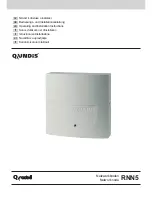
show cam
•
show cdp neighbors
•
show config
•
show flash
•
show interface
•
show log
•
show mac
•
show port
•
show spantree
•
show system
•
show test
•
show version
•
show vtp domain controller
•
show cam
The show cam command displays a switch’s transparent bridging table (also known as the Content
Addressable Memory [CAM] table). This is a table of the Layer 2 MAC addresses attached to each port that
the switch has learned in order to make forwarding decisions.
Duplicate MAC Addresses
Occasionally, because of production mistakes, network devices are configured with identical MAC addresses
on their interfaces. There are also some dual−homed Unix workstations that use manually assigned MAC
addresses. This is a situation that leaves the door wide open for a duplicate MAC address in the network. This
in turn can prevent communication in the local network. When the devices with the same MAC address are on
the same broadcast domain, duplicate MAC addresses can become a substantial problem in your network.
By using the show cam command, you can view the list of known MAC addresses for interfaces attached to
each switch port. If you are in a network where the administration of network devices is divided within the
organization, I recommend that a central process be created to review and document assigned MAC addresses
and thereby avoid this duplication problem.
Note On the Cisco CLI−based IOS, use the show mac command.
show cdp neighbors
Cisco Discovery Protocol (CDP) is a Cisco proprietary protocol used to discover neighboring Cisco devices.
The show cdp neighbors command displays the hardware, IOS version, and active interfaces. This
information is passed between Cisco devices by CDP packets on physical media that support SNAP.
CDP packets are multicast packets that are advertised by the Cisco router or switches but not forwarded. This
protocol is available on the Cisco IOS version 10.3 and later. You can use the show cdp neighbors command
on both the CLI and Set/Clear command−based IOS.
show config
The show config command displays an incredible amount of troubleshooting information. With this
command, you can obtain the entire configuration of switches and modules (except the Route Switch Module
[RSM]) including passwords, system information, protocol settings, interface settings, and the system log
settings.
Note On the CLI−based IOS, use the show running−config command.
314
Summary of Contents for Catalyst 1900 Series
Page 1: ......
















































